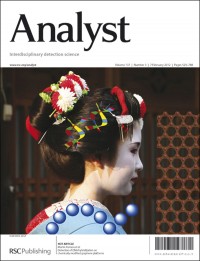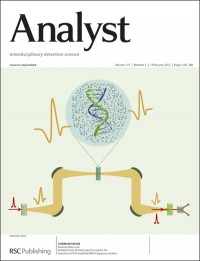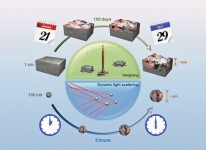Take a look at the latest issue of Analyst, which features three excellent cover articles.
Featured on the front cover is work from Martin Pumera and colleagues of Nanyang Technological University, Singapore. They studied the performances of several chemically modified graphene nanomaterials as sensing platforms by using the electrochemical impedance spectroscopy technique for the detection and believe that their findings may present a foundation for further research and development in graphene-based impedimetric biosensing.
Detection of DNA hybridization on chemically modified graphene platforms
Marcella Giovanni, Alessandra Bonanni and Martin Pumera
Analyst, 2012, 137, 580-583
DOI: 10.1039/C1AN15910K
The inside front cover features a communication from Andreas Manz of KIST Europe, Germany and his collaborators. They present a label free quantitative detection method for DNA samples amplified by polymerase chain reaction (PCR) in aqueous medium using terahertz-time domain spectroscopy (THz-TDS)
Communication: Terahertz-time domain spectroscopy for the detection of PCR amplified DNA in aqueous solution
Arun Arora, Trung Quan Luong, Matthias Krüger, Young Jun Kim, Chang-Hoon Nam, Andreas Manz and Martina Havenith
Analyst, 2012, 137, 575-579
DOI: 10.1039/C2AN15820E
Our back cover highlights research from Sangmin Jeon of Pohang University of Science and Technology (POSTECH), Korea, and his co-workers. They adopted a dynamic light scattering (DLS) method to measure the corrosion of iron nanoparticles. The nanoparticle corrosion rate determined by DLS was found to be almost identical to the value obtained by conventional immersion tests.
A rapid and facile method for measuring corrosion rates using dynamic light scattering
Jinmyoung Joo, Hyejung Seo, Changho Chun, Kunwoo Han, Hwangyo Jung, Sungjee Kim and Sangmin Jeon
Analyst, 2012, 137, 584-587
DOI: 10.1039/C2AN15975A
All these cover articles will be free to access for 6 weeks so let your colleagues know!
This issue also features a number of HOT articles, which will be free for 2 weeks, and 5 papers from our continuing web theme on Future Electroanalytical Developments.













